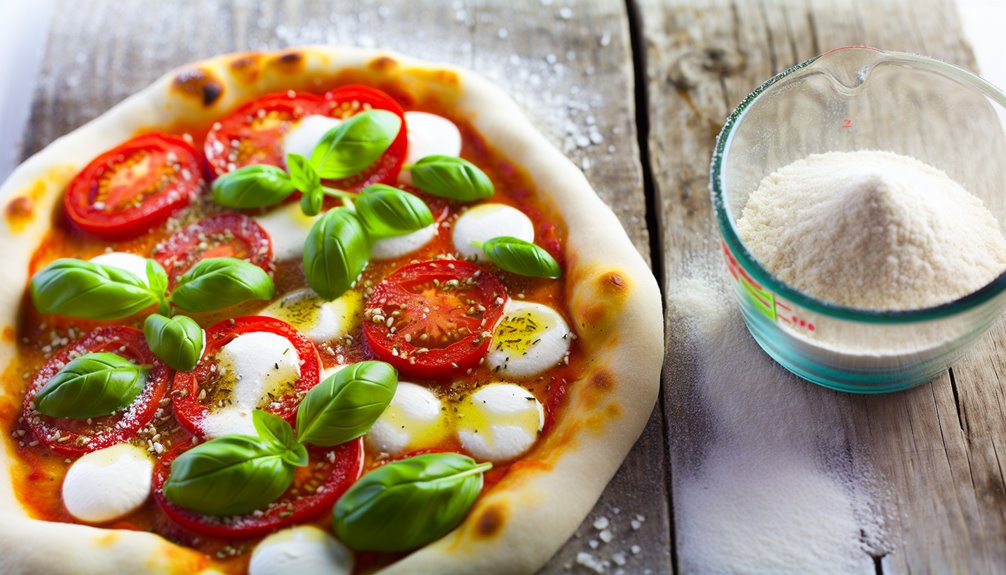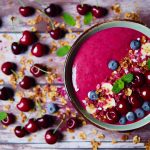The calorie content of gluten-free pizza can vary widely based on the choice of crust and toppings. Cauliflower crusts may be lower in calories, while almond flour options can lead to a higher count due to fats. Traditional toppings can also influence the overall caloric intake. Understanding these factors is essential when aiming for healthier choices. Exploring various crusts and ingredient combinations can further enhance the nutritional profile of gluten-free pizza. More insights await on creating your ideal pizza experience.
Understanding Gluten-Free Pizza Crust Options
While many people enjoy pizza, those with gluten sensitivities require alternative crust options. Cauliflower crust has gained popularity as a nutritious substitute, made primarily from finely processed cauliflower. This option offers a lower carbohydrate count and is rich in vitamins.
Another alternative is almond flour, which provides a nutty flavor and a denser texture. Almond flour is often combined with eggs and other ingredients to create a dough that holds together well.
Both options cater to gluten-free diets while allowing individuals to enjoy the classic pizza experience, making them valuable choices for those seeking delicious alternatives.
Nutritional Breakdown of Common Gluten-Free Ingredients
Understanding the nutritional profiles of common gluten-free ingredients is essential for those seeking healthier pizza options.
Ingredient variety in gluten-free recipes often includes almond flour, coconut flour, and rice flour, each offering different benefits. Almond flour is noted for its high nutrient density, providing healthy fats and protein.
Coconut flour, while lower in carbohydrates, is rich in fiber, promoting digestive health. Rice flour serves as a versatile base but may lack some of the nutrients found in nut-based alternatives.
Caloric Comparison: Gluten-Free vs. Traditional Pizza
When comparing the caloric content of gluten-free pizza to its traditional counterpart, one may find notable differences influenced by the types of flours and toppings used.
Gluten-free ingredients, such as almond or rice flour, can often lead to a higher calorie count due to their fat content. Additionally, portion sizes of gluten-free pizzas may not align with traditional offerings, potentially affecting overall caloric intake.
While some gluten-free pizzas may be lower in calories due to fewer processed ingredients, others can exceed traditional varieties based on the specific ingredients and toppings selected.
Understanding these factors is essential for informed dietary choices.
Tips for Making a Healthier Gluten-Free Pizza
Creating a healthier gluten-free pizza involves making thoughtful choices about ingredients and preparation methods.
Utilizing healthy substitutions, such as whole grain gluten-free flours or cauliflower crusts, can greatly enhance nutritional value. Incorporating fresh vegetables not only boosts flavor but also adds essential nutrients.
Additionally, opting for lower-fat cheeses or plant-based alternatives can reduce calorie content while preserving taste. Adopting portion control is important; enjoying smaller slices can help maintain a balanced diet without sacrificing enjoyment.
Delicious Toppings to Enhance Your Gluten-Free Pizza Experience
While many focus on the crust and sauce, selecting the right toppings can truly elevate a gluten-free pizza experience. Gourmet toppings, such as artichokes, prosciutto, and goat cheese, offer unique flavors that tantalize the palate. Additionally, incorporating fresh herbs like basil, oregano, and rosemary can add a burst of freshness. The table below showcases a variety of delicious topping options to evaluate:
| Topping | Flavor Profile | Suggested Pairing |
|---|---|---|
| Artichokes | Earthy | Feta cheese |
| Prosciutto | Savory | Arugula |
| Goat Cheese | Creamy | Honey drizzle |
| Fresh Basil | Aromatic | Tomato sauce |



